QCF: Metal Gear Rising: Revengeance
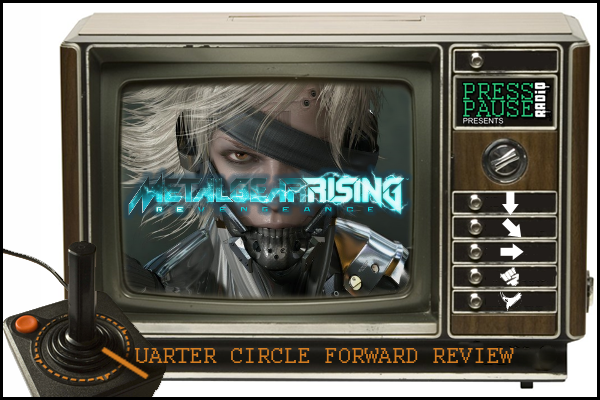
 he Sons of the Patriots, a network hive mind that controlled the nanomachines of every soldier active in any PMC established through manipulation and subterfuge, disappeared four years ago, and yet PMCs live on. What was once the age of nanomachines has now been advanced into a whole new realm of technology -- Cyber-biotic integration through cyborg application -- and ushered into a new age of peace, PMCs are now a means of private security for preventative measures. Raiden, a man who endorses these ideals of preventative maintenance through aggressive means of security, is currently tasked with his latest mission protecting African Prime Minister N'Mani as he rallies his efforts to prevent civil war and continue the peace. But of course, things don't always go as planned.
he Sons of the Patriots, a network hive mind that controlled the nanomachines of every soldier active in any PMC established through manipulation and subterfuge, disappeared four years ago, and yet PMCs live on. What was once the age of nanomachines has now been advanced into a whole new realm of technology -- Cyber-biotic integration through cyborg application -- and ushered into a new age of peace, PMCs are now a means of private security for preventative measures. Raiden, a man who endorses these ideals of preventative maintenance through aggressive means of security, is currently tasked with his latest mission protecting African Prime Minister N'Mani as he rallies his efforts to prevent civil war and continue the peace. But of course, things don't always go as planned.
The stage is set for the juxtaposition of revenge and vengeance as Platinum headlines the development for the latest Kojima Productions entry into the Metal Gear series. And while the franchise has always been known for political opera infused stealth gun action, it now takes a sharp turn into character-action in Revengeance. Everyone will finally have the opportunity to regain control of the somewhat underdog favorite of Metal Gear series, and after some initial skepticism, let me say that this new route is one worth venturing on.
Most character-action games heavily depend on the few key factors that make them stand out, such as the combat and the presentation. Combat is ultimately the key component for this formula to work, and gratifying combat within itself is incentive to keep playing. However, when the setting and presentation helps enforce the fiction and the combat happens to be good, the package feels complete. MGR exceeds past meeting these standards, and excels your expectations for them instead. Say what you will in regards to the fiction of the Metal Gear universe and how obtuse it may be; the suspense of disbelief hasn’t always transitioned over smoothly. And whether you’re in defense of the plot or not, this has always been the case. This Metal Gear story is one that now portrays the gritty reality of the hardship of war one moment, and yet pits you against a man who’s possessed by the spirit of his former superior by the surgically grafted left hand he took to replace the one he had recently lost. Some love it, some hate it.
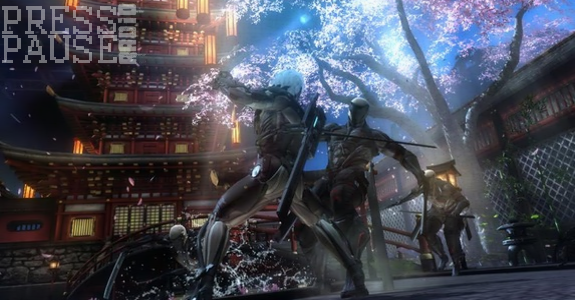
The story of Metal Gear Rising possesses the unique distinction of appealing to everyone. Even if you didn’t follow the events leading up to Revengeance or you weren’t much of a fan, you may miss some of the finer details which deliver excellent fan service. However, the main narrative excels at standing on its own. The summarization of Raiden at the start of MGR is captured lucidly and as its expanded during the advance of the game. The androgynous soldier-turned-badass develops even further, and players, whether they played with the character in the past or not, will appreciate advancing the ninja in his new battle.
The Metal Gear story beats are all here, but they’re a bit more pulpy this time around. Other than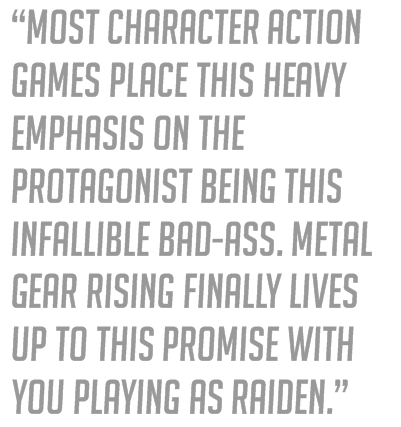 Raiden’s perspective, the moral ambiguity of war and how people view it is present, but not so much of the esoteric political roles and government espionage in play. Instead, the premise simply arches the conflict of reintroducing war for those craving its lifestyle over that of the peaceful one that the world has seen for the last four years. It's simple and effective action-movie plot with the Metal Gear charm that has a kick of tongue-in-cheek humor laced in and out of it that actually fits in a whole lot better than it ever did before. Overall, the presentation contains appeal that still executes the trademark Kojima personality without causing any eye-rolling in the process. For those who took notes and played Metal Gear Solid 4, the gratification of taking down multiple Gekkos and a Metal Gear with Raiden is as sweet as you’d imagine it, and that’s thanks to the title’s simple yet sharp combat dynamics.
Raiden’s perspective, the moral ambiguity of war and how people view it is present, but not so much of the esoteric political roles and government espionage in play. Instead, the premise simply arches the conflict of reintroducing war for those craving its lifestyle over that of the peaceful one that the world has seen for the last four years. It's simple and effective action-movie plot with the Metal Gear charm that has a kick of tongue-in-cheek humor laced in and out of it that actually fits in a whole lot better than it ever did before. Overall, the presentation contains appeal that still executes the trademark Kojima personality without causing any eye-rolling in the process. For those who took notes and played Metal Gear Solid 4, the gratification of taking down multiple Gekkos and a Metal Gear with Raiden is as sweet as you’d imagine it, and that’s thanks to the title’s simple yet sharp combat dynamics.
Combat centers around your main weapon and small-to-strong strikes, along with a set of quicker strikes or sliding assaults using the Ninja Run ability for mobile combat. Other than the articulate blade-slicing mechanic (which I’ll touch on in a bit), the combination attacks are all standard fare and a bit superficial. Though where Revengeance may not be the most robust combat formula, it more than makes up for its lack of depth with sheer accessibility.
The attack layout easily allows for the exchange between quick and strong to be some of the most fluid fighting seen since Platinum’s action darling Bayonetta, which ultimately became the generation standard of contemporary combat systems.
The bridge that keeps this momentum strong is the seamless parry system. Though the concept seems odd in contrast with the particular mob encounters in Revengeance, it feels like the most effective defense ever implemented in an action game when mastered. Thrusting your blade forward when anticipating an attack is handled through the responsiveness of your eye-hand coordination. The motions enemies telegraph before striking and knowing when to defend between their strikes and launching a barrage of your own has never resonated so well before.
Successful motion through defense and slices gives you the opportunity to initiate a Zandatsu, contextual signals acting as a quick-time relay to activate your blade mode. Time slows down, and in the chaos you’ll have the ability to pinpoint the angle of your sword slices and cuts to literally mince your targets into pieces. Though you can enter blade mode at any point and even experiment with it while in combat, the real treat comes using it during these special Zandatsu moments. Some foes even demand a mixture of Ninja running, and while quick-time events are the most tiresome trope in these formula, the existential attention in carrying out what the quick-time events provide is what keeps it satisfying harmony with the combat. The control of the blade mode has a steep curve as you rotate the trajectory of the slice along with Raiden’s physical position, but with the amount of times you’ll be asked to use it, it quickly becomes an organic technique in your arsenal. Using the blade mode, especially during Zandatsu moments, gives you this raw gratification, like the incentive of cutting specific areas for objectives like limbs or torsos just increases this visceral element’s fun factor every time because of the immaculate sense of control it gives.
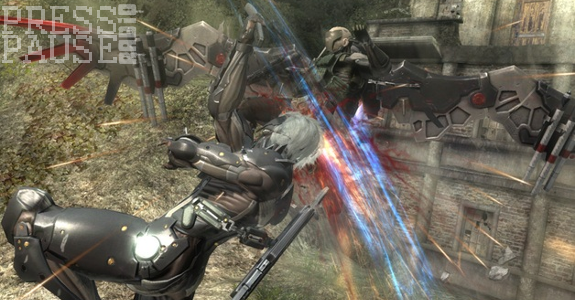
Over time, each scuffle you get into will be evaluated and graded, which will be determined by your response with Zandatsu prompts, speed, and defense depending on the damage you took. These grades all award additional experience points that you can use to purchase skills and health enhancements, Blade mode meter enhancements, weapon enhancements, and more which creates a drive to perfect your combat that genuinely feels rewarding as you progress. Raiden’s katana is not the only weapon you’ll own, and you’ll encounter a variety of weapons that add to your arsenal with each boss you defeat. In true Metal Gear fashion, the Desperados and their members are all talented in specific skills that define their fighting style as well as their personality and motivations, they all have a pattern to their attacks and finding them will brings the same joy that it did from the previous entries.
There is, however, another matter: other than the last boss encounter and well, in fact, just about all of the enemies don’t have the most sophisticated AI. Whether this can be said on just how effective you can be the moment you master the parry system, or if the enemies are just that predictable, the experience doesn’t demand a lot of skill. Where it feels incredibly accessible, it feels even easier even on Hard mode.
Another complaint is the weird emphasis on being stealthy. Metal Gear purists may appreciate the stealth moments, and with how similar the map/radar systems work from the prior entries it can be done, the tactic within itself is completely out of place. Being Stealthy was a must in prior titles because of the sheer number of troops you faced as Snake. Snake is a traditional soldier who specializes in espionage ops that involved smash and move objectives. Metal Gear Rising placed you in the role of Raiden, a super cyborg ninja that can take on a literal Metal Gear tank all by his lonesome.
Where is the incentive to be stealthy here? There is none; you get no special award for doing it, and there are no significant fail conditions if you’re not quiet in your approach. The only reason that comes to mind is if you’re suffering from combat fatigue, which is an antithesis in itself when you’re playing a good character-action game.
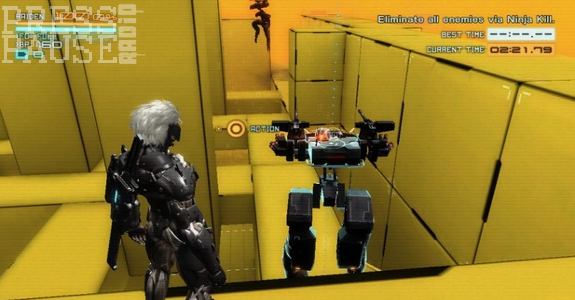
While the stages are beautiful set pieces when traversing through them, the linearity of their design is a shame since there could have been more done with looting. Other than support weapons and items, the only real collectibles are enemy terminals containing VR missions to unlock. Considering that VR missions are the only other bit of content that MGR has to offer other the main story mode, they are worth seeking out. Unfortunately, they aren’t much fun.
Most character action games place this heavy emphasis on the protagonist being this infallible bad-ass. Metal Gear Rising finally lives up to this promise with you playing as Raiden. The only downfall is the fact that it does TOO good of a job making you feel like a one-man army, and though the combat is rewarding by nature, the lack of challenge as you progress may be the title’s biggest albatross. However, regardless of whether or not you’re a Metal Gear fan, this game should be experienced by all and is a testament to the growing quality of character action games and Platinum’s expertise in advancing the genre for the better.






 GeorgieBoysAXE
GeorgieBoysAXE




